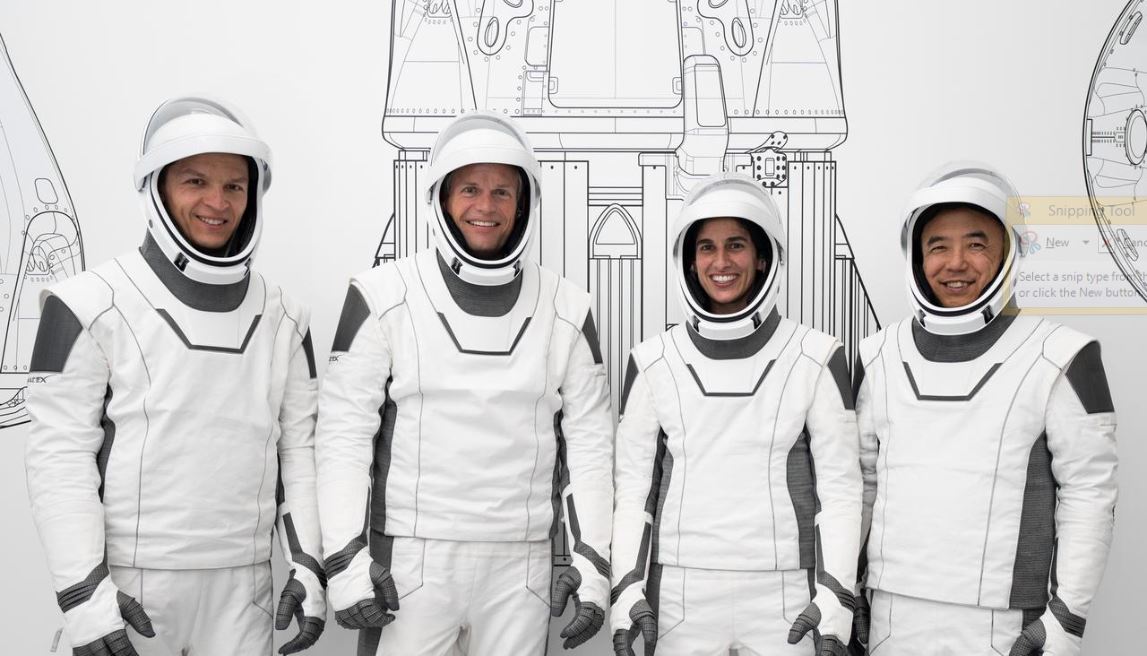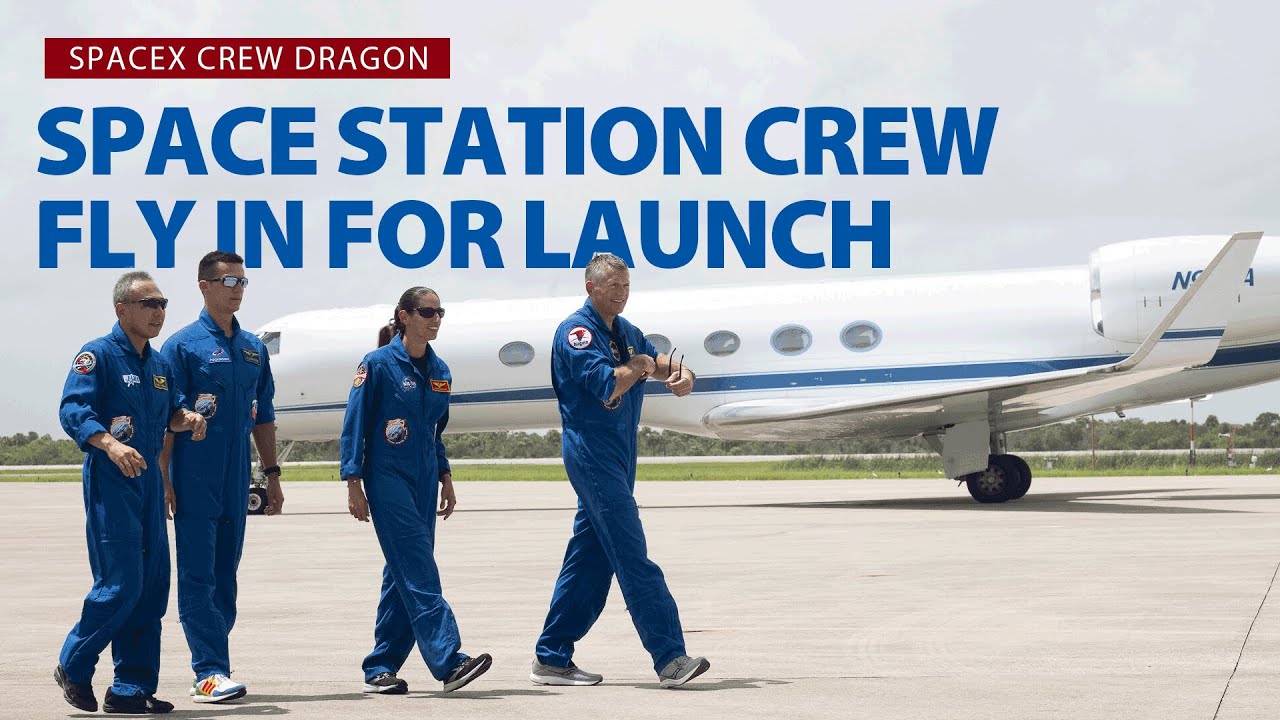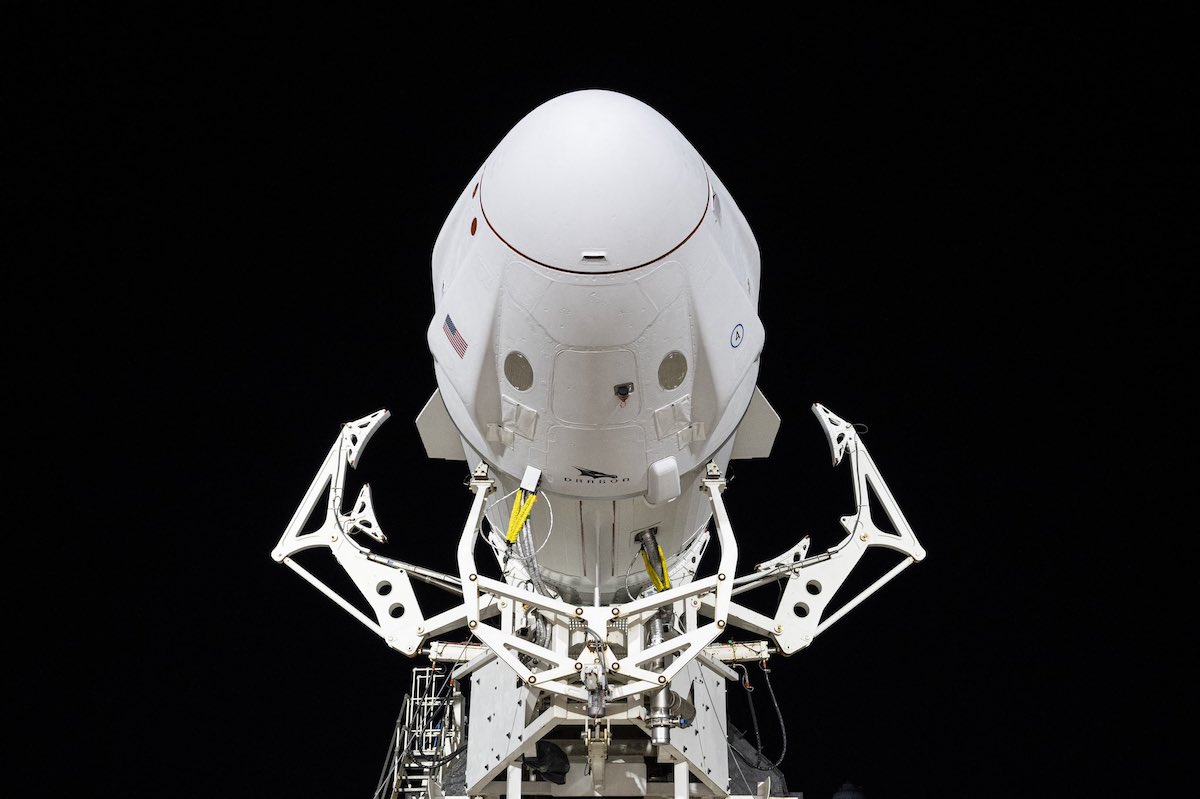NASA And Partners Approve The Launch Of Crew-7 Mission To Space Station
NASA and partners approve the launch of Crew-7 mission to Space Station after a significant meeting took place at the Kennedy Space Center involving NASA, SpaceX, and their international collaborators.
Author:Dexter CookeReviewer:Camilo WoodAug 23, 20233.2K Shares128.7K Views

NASA and partners approve the launch of Crew-7 mission to Space Stationafter a significant meeting took place at the Kennedy Space Center involving NASA, SpaceX, and their international collaborators. During this meeting, the decision was made to proceed with the upcoming launch of the seventh operational Crew Dragon mission to the International Space Station (ISS).
Scheduled for Friday, August 25th at 3:49 a.m. EDT (0749 UTC), the Crew 7 mission will see three astronauts and one cosmonaut aboard the Crew Dragon Endurance. The launch is set to occur from Launch Complex 39A at NASA’s Kennedy Space Center.
With this launch plan, the Crew Dragon is expected to rendezvous with the ISS at 2:02 a.m. EDT (0602 UTC) on Saturday, August 26th. Meanwhile, the four-member Crew 6 team, who have been stationed on the space station since March, are making preparations to return to Earth after facilitating a multi-day handover period to assist the incoming Crew 7 members in getting accustomed to their new environment.
In a series of recent actions, SpaceX's teams successfully rolled the rocket out to the launch pad on Sunday and positioned it vertically on Monday afternoon. The subsequent step involves a "dry dress rehearsal," where both the crew and launch teams will simulate the pre-flight operations. On the following Tuesday morning, the astronauts will board the Dragon spacecraft in the lead-up to the simulated countdown to launch at 3:49 a.m. EDT (0749 UTC).
After this phase, NASA's Commercial Crew Program manager, Steve Stich, detailed that the Falcon 9 rocket will be fully fueled, leading to a crucial six-second static fire test of its nine Merlin engines.
"We’ll test the rocket one last time to make sure the engines perform well and then we’ll step back and review that data jointly with SpaceX," Stich said.

Crew arrives at NASA's Kennedy Space Center for SpaceX Dragon launch
During the Flight Readiness Review (FRR), there were a few particular subjects that NASA and SpaceX aimed to discuss and find common ground on before giving the green light to proceed.
One of these topics revolved around what Steve Stich referred to as "low-flow propellant isolation valves." These valves had encountered corrosion issues subsequent to SpaceX's 28th cargo mission to the International Space Station, known as Commercial Resupply Services 28 (CRS-28).
Stich mentioned that the teams removed the worrisome valves from Cargo Dragon C208 to conduct a more comprehensive inspection and gain deeper insights into the underlying reasons for the corrosion. As a result of this examination, certain valves on the Crew Dragon Endurance, designated for the upcoming Crew-7 mission, were replaced.
“„The corrosion is caused by oxidizer vapors mixing with a little bit of moisture. The materials are corrosion resistant, but if you get enough vapor from the oxidizer along with water, you can form a little bit of acid and get some corrosion.- NASA's Commercial Crew Program manager, Steve Stich
According to Stich, over the past month, collaborative teams from both NASA and SpaceX diligently investigated the issue. SpaceX carried out testing across various sites across the United States, while NASA conducted its own investigations at the Marshall Space Flight Center located in Huntsville, Alabama.
Another noteworthy matter that arose during the Flight Readiness Review concerned the drogue parachutes utilized in the return sequence of a Crew Dragon spacecraft. Stich pointed out that during the most recent Dragon splashdown procedure involving the return of the Crew-5 astronauts, one of the drogue parachutes displayed a delay of nearly five seconds in fully inflating following the complete inflation of the first drogue parachute.
In a standard return procedure for a Dragon spacecraft, two drogue parachutes are deployed prior to the release of the four main chutes. Through rigorous modeling and assessment in both regular and abort scenarios, the functionality of the drogue parachutes has been confirmed, thereby granting approval for their usage in the launch of the Crew-7 mission. Stich highlighted that NASA and SpaceX occasionally employ Cargo Dragon missions to test novel enhancements that might bring potential benefits to crewed missions.
An instance of this is the implementation of what Stich referred to as an "energy modulator," more commonly known as a "shock absorbing strap."
“„As we pull out the main bags from the drogue parachutes during that deployment sequence, we’re flying some ties on that to keep the straps in tact and not contact other parts of the system during deployment. So, we flew those on a cargo flight first, well actually on several cargo flights. Now, we’re flying it on the crew flight for the first time, on Crew-7.- NASA's Commercial Crew Program manager, Steve Stich
Maintain Hunger, Sustain Vigilance
As SpaceX readies itself for its 11th crewed mission, the company is once more aiming for a record-breaking year in spaceflight. Even as the teams at LC-39A were getting set for the dry dress rehearsal for the Crew-7 mission, simultaneous preparations were underway for two Starlink missions.
In California, the team is focused on a launch scheduled for 12:45 a.m. PDT 3:45 a.m. EDT, 0745 UTC) for the Starlink Group 7-1 mission. This mission will send a batch of 21 Starlink satellites into orbit from Vandenberg Space Force Base (VSFB).
While the Falcon 9 was being readied for vertical positioning in preparation for the crewed mission, a ground transport vehicle carrying Starlink satellites within payload fairings was spotted en route to Space Launch Complex 40 at Cape Canaveral Space Force Station (CCSFS). This is all in support of the upcoming Starlink Group 6-11 mission, which is anticipated to launch as early as Tuesday night.
According to Bill Gerstenmaier, who holds the position of Vice President for Build and Flight Reliability at SpaceX, they have established numerous support teams to manage these missions, ensuring that their personnel are not excessively strained or overburdened.
In the current year of 2023, SpaceX has successfully launched 53 Falcon 9 rockets, three Falcon Heavy rockets, and conducted one test flight involving the complete Starship stack. Gerstenmaier emphasized that executing 51 commercial flights using the Falcon 9 in 2023 has proven to be significantly beneficial. This extensive operational experience furnishes valuable context and data for their endeavors in human spaceflight.
“„When we fly Starlink missions, we will typically fly a higher thrust profile, actually run pumps at higher turbine speeds and that actually lets us see how the engines really perform. Then we go fly a crew mission. We fly that crew mission and reduce levels with more margin available for the hardware. So, I think that gives us another benefit of getting a chance to see this hardware operate in a more stressful environment.- Bill Gerstenmaier, Vice President for Build and Flight Reliability at SpaceX
He mentioned that pinpointing this optimal balance provides them with a deeper understanding of the capabilities of the Falcon 9 rocket, especially as their frequency of flights continues to rise.
“My words are ‘stay hungry.’ The company’s words are ‘stay paranoid.’ I like ‘hungry’ better than ‘paranoid,’ but the idea is that you just gotta keep looking and when you find some small problem, you gotta really understand what it’s trying to tell you because later, when the big problem happens, you’ll see the breadcrumbs that lead all the way back to that little problem,” Gerstenmaier said.
“The secret is to find those little problems, expand on those and then help yourself to fly safer in the future.”

Dexter Cooke
Author
Dexter Cooke is an economist, marketing strategist, and orthopedic surgeon with over 20 years of experience crafting compelling narratives that resonate worldwide.
He holds a Journalism degree from Columbia University, an Economics background from Yale University, and a medical degree with a postdoctoral fellowship in orthopedic medicine from the Medical University of South Carolina.
Dexter’s insights into media, economics, and marketing shine through his prolific contributions to respected publications and advisory roles for influential organizations.
As an orthopedic surgeon specializing in minimally invasive knee replacement surgery and laparoscopic procedures, Dexter prioritizes patient care above all.
Outside his professional pursuits, Dexter enjoys collecting vintage watches, studying ancient civilizations, learning about astronomy, and participating in charity runs.

Camilo Wood
Reviewer
Camilo Wood has over two decades of experience as a writer and journalist, specializing in finance and economics. With a degree in Economics and a background in financial research and analysis, Camilo brings a wealth of knowledge and expertise to his writing.
Throughout his career, Camilo has contributed to numerous publications, covering a wide range of topics such as global economic trends, investment strategies, and market analysis. His articles are recognized for their insightful analysis and clear explanations, making complex financial concepts accessible to readers.
Camilo's experience includes working in roles related to financial reporting, analysis, and commentary, allowing him to provide readers with accurate and trustworthy information. His dedication to journalistic integrity and commitment to delivering high-quality content make him a trusted voice in the fields of finance and journalism.
Latest Articles
Popular Articles
